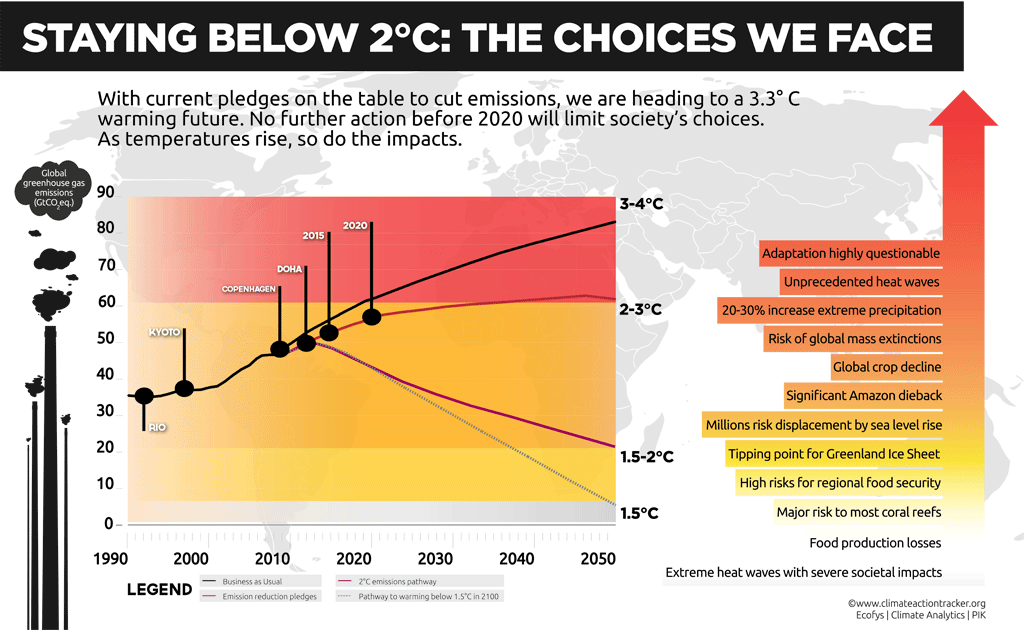The official United Nations Framework Convention on Climate Change (UNFCCC) negotiations in Doha have agreed that the Kyoto agreement will continue for a second commitment period, 2013-2020, and a number of countries have made carbon emission reduction commitments for this period. But not enough reductions have been agreed to limit global warming to the 2°C rise above the pre-industrial average global temperature by the end of the century, that most climate scientists believe is needed in order to avoid potentially disastrous climate impacts.
The reductions that have been agreed will not have any real impact by 2020, and Carbon Action Tracker calculates that on the basis of this scenario, by 2040 the average global temperature will have risen more than 3°C above the pre-industrial level. This is bad news.

According to the Carbon Action Tracker report,
- “While the official UNFCCC negotiations made some limited progress, encouraging developments on the margins give hope that faster progress is possible.
- “On the official side, minor steps were made towards more emission reductions, including the agreement of a second commitment period of the Kyoto Protocol, continuation of climate finance and initiation of a discussion on raising the ambition level before 2020.
- “On the margins of the negotiations, numerous actions provide encouraging signals, including new pledges by countries, significant policy activity to meet the pledges and increased support for additional complementary initiatives to raise the ambition level.
- “All in all, the world is still set to warm well above 3°C with current action.”
World Meteorological Association reports record levels of greenhouse gases in 2011
Combine this with a report in November this year from the UN’s World Meteorological Organization (WMO), that the amount of heat-trapping carbon dioxide in the atmosphere reached a record 390.9 parts per million (ppm) in 2011, and you start to get a sense of urgency. (Unless you’re a ConDem – the recent Energy Bill had no decarbonisation target for the energy industry. How idiotic is that?)
The level of CO2 in the atmosphere is 40 percent higher than levels in 1750, before the UK and other Western countries began burning fossil fuels in large amounts in the industrial revolution.
The WMO Report also identifies record levels of other heat-trapping gases. Methane reached 1813 parts per billion (ppb) in 2011, and nitrous oxide rose to 324.2 ppb.
With increases in all the greenhouse gases, the amount of excess heat prevented from escaping into outer space was 30 percent higher in 2011 than it was in 1990.
